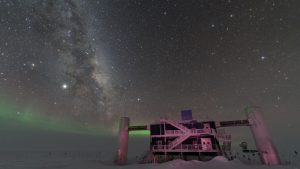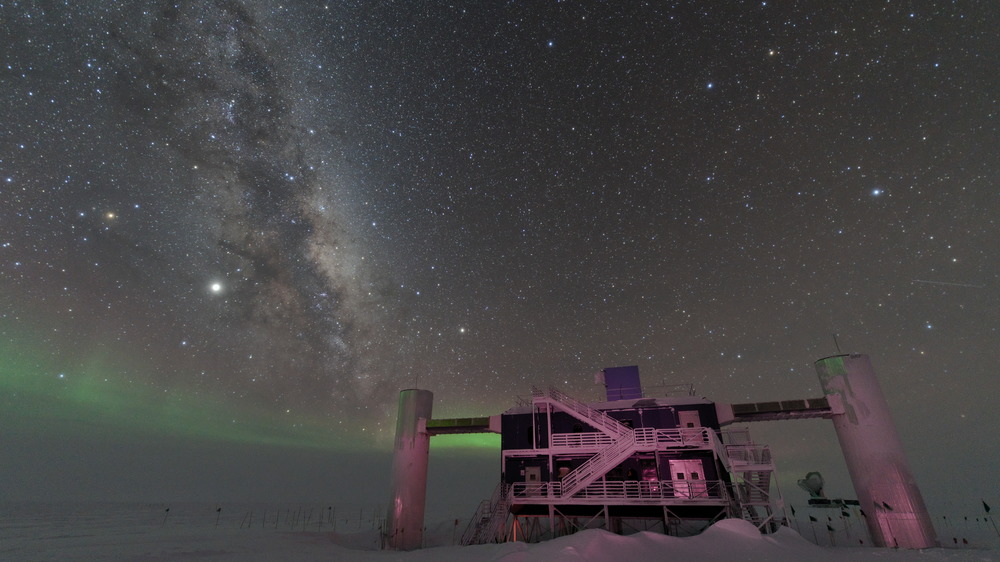
An astronomer at The University of Alabama is part of an effort to upgrade a massive cosmic particle detector.
Dr. Dawn Williams, UA professor of physics and astronomy, is part of the team that will upgrade the IceCube Neutrino Observatory, the Antarctic detector that identified the first likely source of high-energy neutrinos and cosmic rays.
Williams will coordinate enhancing the calibration of the detector, part of a project involving an international team of scientists working on the observatory, an array of 5,160 basketball-sized optical sensors deeply encased within a cubic kilometer of clear Antarctic ice.
The National Science Foundation approved funding to upgrade the IceCube detector, extending its scientific capabilities to lower energies and thus enabling IceCube to reach neutrino energies that overlap with the energy ranges of smaller existing neutrino detectors worldwide. The IceCube Upgrade project will introduce seven strings of optical modules at the bottom center of the 86 existing strings, adding more than 700 new and enhanced optical modules.
The observatory was set up to detect neutrinos, abundant subatomic particles famous for passing through anything and everything, rarely interacting with matter. About 100 trillion neutrinos pass through our bodies every second. The project found evidence of the source of neutrinos, a discovery that opens the door to using these particles to observe the universe.
“The grant will facilitate upgrades that increase the sensitivity of the detector to low energy neutrinos and give us the opportunity to deploy new calibration devices, including LED light sources, cameras and acoustic sensors,” Williams said. “These new devices will give us detailed new information on the properties of the ice at the South Pole.”
The $37 million IceCube Upgrade, to be deployed during the 2022-23 polar field season, has now secured $23 million through an NSF mid-scale research award. Last fall, activities got underway, including setting up the IceCube Upgrade office, thanks to initial funding from NSF and additional support from international partners in Japan and Germany as well as from Michigan State University and the University of Wisconsin–Madison.
“Neutrinos are the least understood particles in the Standard Model of particle physics,” explains Kael Hanson, director of the Wisconsin IceCube Particle Astrophysics Center at UW–Madison and principal investigator of the IceCube Upgrade, referencing the scientific model that with unprecedented success explains the behavior of most subatomic particles. “Neutrinos have properties the Standard Model can’t account for.”
The principal goal of this IceCube extension is to enhance the cubic-kilometer detector to gain precision in studies of the oscillation properties of neutrinos, which can transform—or oscillate—from one type of neutrino to another as they interact with other particles and travel through space.
Another goal is to better characterize the ice around the IceCube sensors and thereby obtain better performance with the existing detector, thus yielding more precise reconstructions of neutrinos at all accessible energies. Most notably, this will give high-energy neutrino astronomy a boost, as IceCube will be able to resolve the neutrino sky more sharply. Furthermore, understanding the ice better will enable the collaboration to improve the reconstruction of archived data collected over the past nine years.
The new strings will be deployed below the center of the existing detector, a mile deep in the Antarctic ice. The ice in and around the detector is extremely transparent, which makes it an ideal medium in which to study the properties of relativistic particles.
Williams will lead efforts to improve the optical properties of the ice through enhanced calibration. The new data will be applied to the entire archival IceCube data set and will improve sensitivity.
